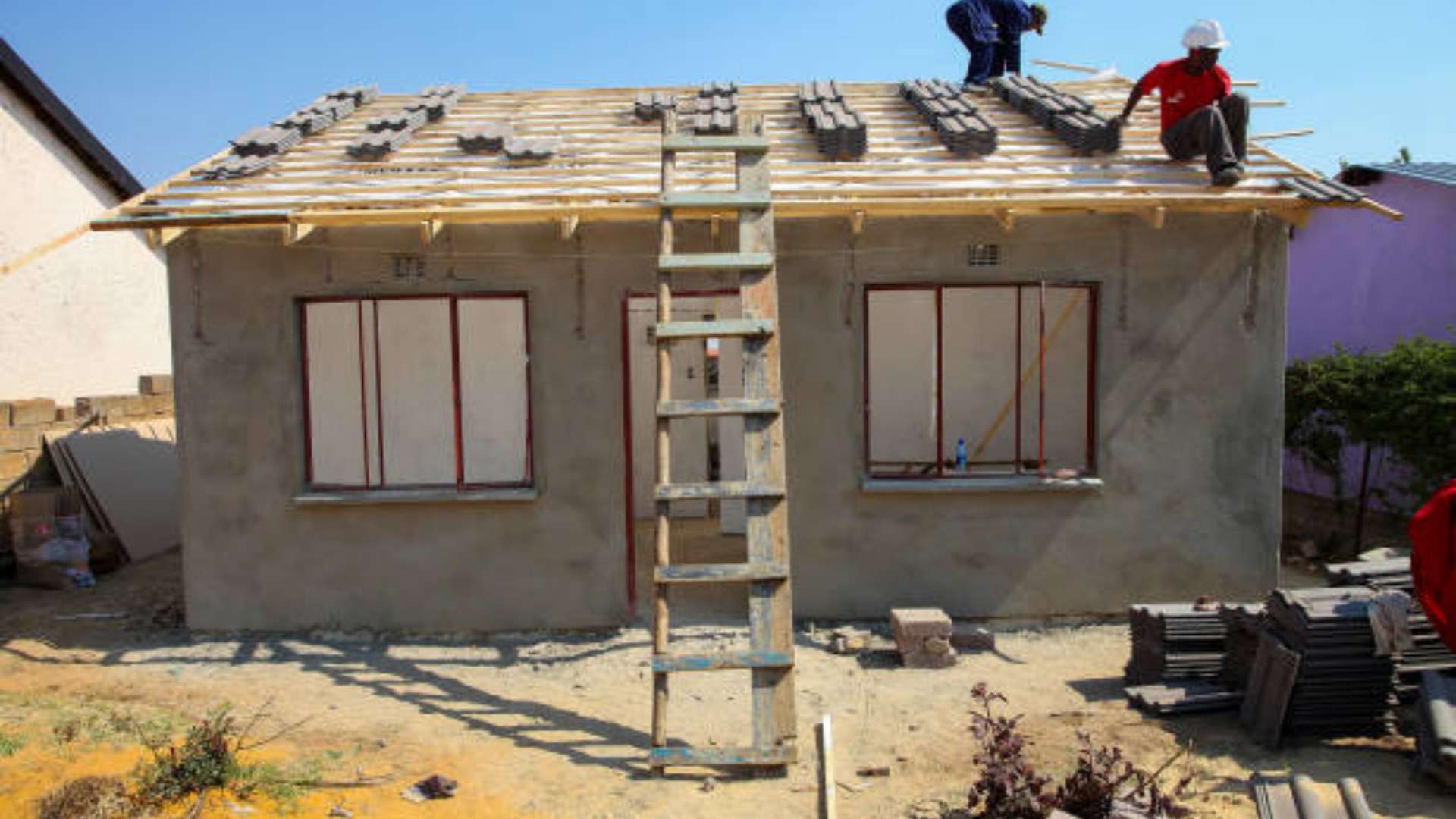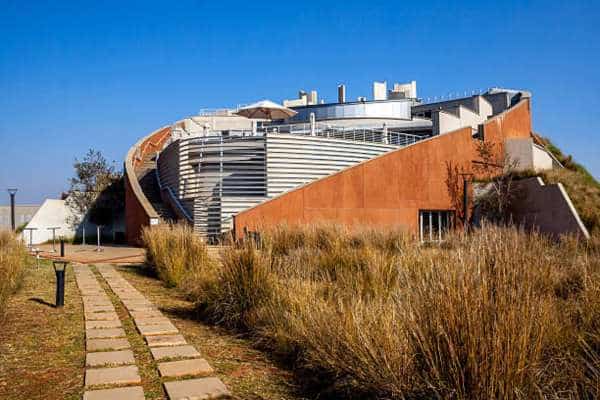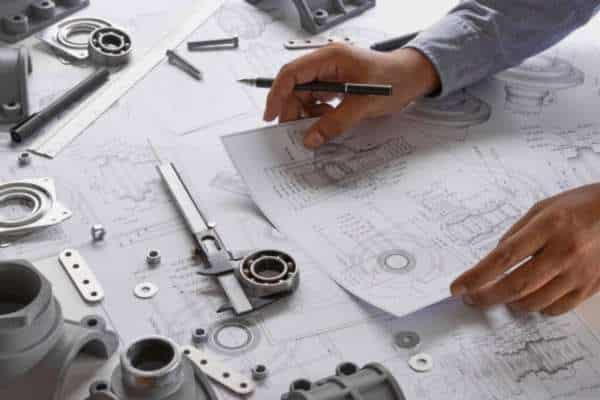
Bulkhead installation have become a sought-after feature in modern homes due to their ability to blend functionality with style. Whether you need to conceal electrical wiring, air conditioning ducts, or simply enhance the room’s overall design, bulkheads are an ideal solution. In Johannesburg, where the demand for contemporary, multi-functional spaces is on the rise, bulkheads are increasingly used to elevate interiors, providing both practical utility and a sophisticated look.
This guide will delve into the various bulkhead designs available for Johannesburg homeowners, discussing their aesthetic appeal and integration with existing structures. Additionally, we’ll explore the costs associated with bulkhead installation, offering insight into how homeowners can budget effectively. A key focus will be on the integration of bulkheads with drywall, showing how these elements can work together to create a seamless, modern ceiling design that enhances the overall ambiance of your home.
What is a Bulkhead and Why Should You Consider Installing One?
A bulkhead is a recessed section of the ceiling, typically used to conceal essential elements such as electrical wiring, air conditioning ducts, or plumbing systems. This not only helps keep these functional components hidden but also maintains a clean and organised ceiling appearance. By integrating a bulkhead into your space, you can ensure that essential utilities remain accessible for maintenance while achieving a sleek, uninterrupted ceiling line.
Beyond its practical uses, a bulkhead also serves as a stylish ceiling feature that can transform the look of a room. Available in a range of designs, from simple minimalist shapes to more elaborate, custom-built solutions, bulkheads add character and depth to your interior design. Whether you’re looking to enhance the aesthetics of your living room or create a unique focal point Installing a bulkhead can bring both form and function to your space, making it a smart choice for any home improvement project.
Popular Bulkhead Designs for Modern Homes in Johannesburg

Explore trendy and stylish bulkhead designs perfect for modern homes in Johannesburg.
When designing bulkheads for modern homes in Johannesburg, homeowners often opt for clean, minimalist styles that complement contemporary interiors. Rectangular bulkheads are a popular choice due to their versatility, offering a simple yet elegant look that suits most rooms. Their straight lines and even proportions create a streamlined appearance. Which works particularly well in spaces that prioritise a sleek aesthetic. These bulkheads are also easy to integrate with other ceiling features such as lighting, enhancing their functionality.
Curved and geometric bulkheads are also gaining popularity in Johannesburg for those seeking a more distinctive and creative design. Curved bulkheads offer a softer, more organic look, making them ideal for living spaces or bedrooms where a relaxing atmosphere is desired. On the other hand, geometric designs, with their sharp angles and bold shapes. Are perfect for those who want to make a statement and add an element of modern artistry to their home’s ceiling design.
Costs of Bulkhead Installation in Johannesburg
The cost of bulkhead installation in Johannesburg can fluctuate based on various factors, such as the size and scope of the project. Basic bulkhead installations typically cost less, especially if standard materials like drywall or plasterboard are used. For a typical residential bulkhead, you might expect to pay between R1,000 to R2,500 per linear metre, depending on the complexity of the design and the area being covered like Sandton or Randburg for example.
However, the price can increase significantly if you opt for custom designs, fire-rated bulkhead options, or the integration of features like lighting, air conditioning, or acoustic treatment. These additional elements often require specialised materials and expert installation, which can raise the overall cost. It’s essential to plan your budget carefully by considering these variables and seeking quotes from reputable contractors to ensure you get the best value for your investment in bulkhead installation.
Factors Affecting Bulkhead Prices in South Africa
The price of bulkhead installation in Johannesburg is influenced by several key factors. One of the most significant is the material used for the bulkhead. Drywall is typically more affordable, while plasterboard or custom materials may come at a higher price. The type of material chosen can greatly affect the overall cost, especially if specialised or premium options are selected. Another factor that impacts bulkhead prices is the size of the area being covered. Larger spaces will naturally require more materials and labour, which can increase the cost. Additional features, such as bulkhead lighting integration or the inclusion of fire-rated bulkhead options, can also contribute to a higher price. The complexity of the design and the need for customisation will further influence the final cost, with more intricate or bespoke designs generally being more expensive to install.
Crucially, the cost also reflects the caliber of the installer. While a DIY or inexperienced contractor might offer a lower initial quote, professional bulkhead installation requires specialized skill, especially when ensuring the structure is level, plumb, and seamlessly integrated with existing walls and ceilings. A reputable contractor in Johannesburg often includes project management, quality assurance, and compliance with local building regulations (where applicable for structural bulkheads), which mitigates the risk of future sagging, cracking, or failure of integrated elements like recessed lighting. Therefore, when reviewing quotes, be sure to assess not just the price, but the total service package and the installer’s references, as hidden costs from poor workmanship can quickly erase any perceived savings.
Indicative Bulkhead Installation Pricing Table in South Africa
This table provides general estimates for planning purposes in the Johannesburg area. All prices are indicative and subject to site-specific conditions, final design specifications, and the chosen contractor’s rates.
| Bulkhead Type / Service | Description | Typical Price Range (ZAR per Linear Meter) |
|---|---|---|
| Basic Drywall Bulkhead | Simple straight run, standard drywall/plasterboard, no integrated features. Price includes material, framework, and labour. | R1,000 – R1,800 |
| Medium Complexity Bulkhead | Features slight curves, stepped designs, or required plasterboard finish. Often includes chases for integrated strip lighting (LED light fitting excluded). | R1,800 – R2,800 |
| High Complexity / Specialty | Detailed custom shapes (e.g., circular, wavy), very deep profiles, or bulkheads requiring fire-rated or acoustic drywall materials. | R2,800 – R4,500+ |
| Feature Integration (Add-on) | Labour and material cost for incorporating lighting fixtures (downlights), air conditioning ducts, or speakers into the bulkhead structure. | R250 – R500 per integration point |
| Skimming & Finishing (Per m²) | Cost for final skim coat application over joints and screws, typically for painting. | R80 – R150 per square meter |
| Priming & Painting (Per m²) | Cost for preparing and painting the completed bulkhead surface (two coats of quality PVA paint). | R120 – R250 per square meter |
Note: The linear meter cost typically includes the raw materials (framework, board) and the basic labour to erect and finish the structure to a paint-ready state (excluding final skim/paint unless specified).
The Importance of Integrating Bulkheads with Drywall
The integration of bulkheads with drywall is a key design feature in modern homes. When done correctly, it creates a seamless ceiling that enhances the overall aesthetic of the room. Drywall provides a smooth surface that can easily blend with bulkheads, creating a polished, cohesive look. By hiding essential systems. Such as electrical wiring, air ducts, and plumbing, within the bulkhead, the ceiling remains uncluttered and visually appealing. This integration ensures that the room feels spacious and tidy, contributing to a clean, minimalist design.
In addition to its visual appeal, drywall bulkhead integration improves the room’s functionality. It offers space for recessed lighting, which can enhance the ambiance, or for HVAC systems. Ensuring air conditioning or heating units are discreetly concealed. This approach makes the ceiling more practical without compromising the design. The combination of form and function is what makes drywall integration a popular choice for creating modern, stylish, and efficient living spaces.
Designing Your Bulkhead: Customisation and Flexibility

Explore customisation and flexibility in designing your bulkhead to perfectly match your style and space requirements.
A significant advantage of bulkheads is the level of customisation they offer. Whether you’re working with an architect or designer, a bulkhead can be tailored to meet the unique requirements of your space. From selecting the ideal shape to deciding on materials, the possibilities for creating a bespoke ceiling feature are endless. Custom bulkhead designs allow for flexibility, enabling homeowners to achieve the perfect balance of form and function in their interiors.
In addition to shape and design, custom bulkheads can also incorporate functional elements. For example, integrating lighting into the bulkhead can create a dramatic effect while enhancing the room’s atmosphere. Furthermore, bulkheads can be designed to accommodate essential systems such as air conditioning ducts or curtain rails, seamlessly blending them into the ceiling. This level of customisation ensures that bulkheads not only contribute to the aesthetic appeal but also enhance the practicality of your home, offering both style and functionality.
The Role of Bulkheads in Modern Home Aesthetics
Bulkheads have become a staple in modern home aesthetics due to their ability to blend functionality with style. A thoughtfully designed bulkhead can transform a room by adding depth and structure, making it visually appealing. Whether it’s a simple, minimalist design or a more elaborate feature. Bulkheads create focal points that draw attention to key areas of the space, such as lighting or architectural details.
Additionally, bulkheads are an excellent way to highlight varying ceiling heights. And create seamless transitions between different zones in open-plan living areas. Their sleek, clean lines work effortlessly with contemporary interiors, enhancing the overall design of a room. By integrating bulkheads into the ceiling, homeowners can achieve a sophisticated and polished look that elevates the space without compromising on functionality.
The Benefits of Using Acoustic Bulkheads
Acoustic bulkheads are an excellent solution for homes where noise control is a priority. These bulkheads are specifically designed to absorb sound, helping to reduce the transfer of noise between rooms. This makes them particularly useful in spaces where quiet is essential, such as home offices, bedrooms, and media rooms. By reducing sound transmission, they can create a more peaceful and comfortable environment, allowing for better focus and relaxation.
In addition to improving acoustics, acoustic bulkheads can also enhance the overall functionality of multi-purpose spaces. For instance, in open-plan living areas, they can help compartmentalise noise, ensuring that one section of the house does not disturb another. This added feature provides both practical and aesthetic value, making it an investment that can improve your home’s livability. Whether for work or leisure, the inclusion of acoustic bulkheads can greatly contribute to a more serene atmosphere in any room.
Fire-Rated Bulkheads for Added Safety
Fire-rated bulkheads play a critical role in enhancing the safety of both residential and commercial spaces. In areas with high foot traffic or where fire safety is a priority, these bulkheads offer invaluable protection by slowing the spread of fire. Reducing the risk of damage and allowing more time for evacuation. Made from materials that are treated to resist high temperatures, fire-rated bulkheads provide an added layer of security against fire hazards.
The materials used in fire-rated bulkheads are specially engineered to meet safety standards and withstand prolonged exposure to heat. These bulkheads can be integrated into various ceiling systems, offering both functionality and safety without compromising on design. Whether in office buildings, apartment complexes, or homes, choosing fire-rated bulkheads is an effective way to ensure that your property meets fire safety regulations while maintaining the aesthetic appeal of your interior spaces. With their protective qualities, fire-rated bulkheads are a wise investment for any building.
Choosing the Right Bulkhead Materials
Choosing the right materials for your bulkhead is crucial in achieving both durability and aesthetic appeal. Drywall is one of the most commonly used materials, known for its versatility and ease of installation. It is an excellent choice for homeowners looking for a smooth. Clean finish that blends well with other ceiling features. Additionally, drywall offers the flexibility to accommodate bulkhead lighting integration. And can be painted or textured to suit various design preferences.
Plasterboard is another popular option, particularly for those seeking a sturdier material with enhanced soundproofing properties. It is ideal for acoustic bulkhead installations, where noise reduction is a priority. For a more natural look, wood can be used, offering a warm and organic feel to the space. Wood bulkheads can add a unique, bespoke touch. But they may require more maintenance than drywall or plasterboard. Ultimately. The choice of material depends on the desired aesthetic, functionality, and long-term maintenance preferences for the space.
How to Plan Your Bulkhead Installation

Step-by-step guide to planning your bulkhead installation for a perfect fit in your space.
Planning your bulkhead installation is essential for ensuring a smooth and successful project. Start by collaborating with a professional carpenter who can guide you in choosing the best design, materials, and features that suit your space. Whether you’re looking for a sleek modern bulkhead or a more intricate custom design. An expert will help you assess your options and make the right decisions based on your home’s layout and functionality needs.
A well-thought-out plan also ensures that your bulkhead integrates seamlessly with other ceiling elements, such as lighting and ventilation systems. Proper planning can prevent costly mistakes and ensure everything aligns perfectly with your overall design vision. By working with a professional, you can avoid delays, minimise additional costs. And ensure the installation process runs smoothly from start to finish, leaving you with a polished and functional ceiling feature.
The Advantages of Hiring Johannesburg Bulkhead Specialists
Hiring experienced Johannesburg bulkhead specialists offers a range of advantages that can make a significant difference in the outcome of your project. These professionals bring expertise in handling intricate designs and ensure that your bulkhead integrates seamlessly with other ceiling features like lighting and air conditioning. Their skills allow them to deliver high-quality results, whether you’re looking for a simple bulkhead or a more complex custom design.
In addition to their technical skills, local bulkhead specialists are familiar with local building codes and regulations, ensuring that your installation complies with all necessary safety standards. Their knowledge of the best materials and installation techniques allows them to provide guidance. On the most suitable options for your specific needs, helping you save time and avoid costly mistakes. With their assistance, you can achieve a polished, professional result that enhances both the functionality and aesthetic of your space.
Final Thoughts …
Bulkhead installation is a versatile solution that not only enhances the functionality. But also elevates the aesthetic appeal of your home in Johannesburg. Whether you’re looking for a sleek, modern design or a practical way to conceal utilities such as electrical wiring or air ducts, bulkheads offer a wide variety of design possibilities. They seamlessly integrate with drywall and other ceiling features. Making them an ideal choice for creating a polished and cohesive look. With the right design. A bulkhead can transform any room into a more organised and visually pleasing space.
When planning your bulkhead installation, it’s important to consider the costs, design options, and the overall installation process. Working with experienced professionals who specialise in Johannesburg ceiling design. Will ensure that your bulkhead installation meets both your functional needs and aesthetic goals. Their expertise will help guide you through the selection of materials and finishes. Making sure your investment adds lasting value to your home. So why not call us today on 087 551 0801 and let us quote you happy or feel free to contact us for any questions or assistance you might need.
FAQs
What is a ceiling bulkhead and why is it popular in modern Johannesburg homes?
A ceiling bulkhead is a recessed or dropped section of a ceiling, typically constructed with a drywall frame and plasterboard finish. They are popular in modern homes for adding architectural interest, concealing utilities like air conditioning ducts or wiring, and providing a framework for integrated lighting design.
What is the average cost of bulkhead installation per square metre in Johannesburg?
The cost of bulkhead installation in Johannesburg generally starts from R550 per square metre, but this can vary significantly. Final prices depend on the complexity of the design, the materials used, and whether specialist features like integrated lighting are included.
How does drywall integration work for a seamless bulkhead finish?
Seamless drywall bulkhead integration involves using a metal or timber frame for the bulkhead structure, which is then clad in plasterboard and expertly finished with jointing compound. This creates a smooth, continuous surface that blends seamlessly with the existing ceiling.
What are the most popular bulkhead designs for residential properties?
Popular residential bulkhead designs include L-shape and U-shape drops, light troughs for hidden LED strips, and stepped designs that create layers of depth and shadow. Custom, curved, or multi-level designs are also common for feature areas.
Can a bulkhead be used to conceal air conditioning or electrical wiring?
Yes, one of the primary functions of a ceiling bulkhead is to conceal utilities such as air conditioning ductwork, electrical cables, and plumbing pipes, creating a clean, uncluttered ceiling aesthetic in your home.
What materials are typically used for bulkhead construction in South Africa?
The most common materials are lightweight steel or timber for the framing, and plasterboard (also known as gypsum board) for the cladding. Some designs may use EPS (Expanded Polystyrene) pre-moulded components.
How long does a typical bulkhead installation take in Johannesburg?
The installation timeline varies based on complexity, but a standard-sized, simple drywall bulkhead can often be framed and sheeted within 2 to 3 days. The final plastering and painting stages will add more time to the total project duration.
What materials are typically used to construct bulkheads in South Africa?
Bulkheads are usually framed using lightweight galvanized steel stud and track systems or timber brandering. This frame is then clad with RhinoBoard (gypsum plasterboard). Standard board thicknesses are commonly used, but specialized boards like FireStop or MoistureResistant RhinoBoard are used in high-risk areas (e.g., above stoves or in bathrooms).
Are bulkhead ceilings suitable for all rooms in a house?
Yes, bulkhead ceilings are versatile. They are frequently installed in open-plan living areas, kitchens, dining rooms, and main bedrooms to define zones and add a premium design element.
What is a ‘light trough’ bulkhead and what is its benefit?
A light trough is a specific bulkhead design that incorporates a recessed channel to hold concealed lighting, typically LED strip lights. Its main benefit is creating soft, ambient, indirect lighting that washes the ceiling or adjacent wall, enhancing the room’s atmosphere.
Do I need a professional contractor for bulkhead installation in Johannesburg?
It is highly recommended to hire Johannesburg bulkhead specialists or professional drywall contractors. Bulkhead installation requires technical skill in framing, precise measurements, and a high-level finish to ensure a flawless result.
How much does the labour cost for bulkhead installation compare to the materials cost?
In South Africa, the labour costs for complex installations like bulkheads are generally higher than for a standard ceiling due to the required skill and intricate framing. Labour typically makes up a significant portion of the total bulkhead cost.
What are the fire-safety considerations for drywall bulkheads?
For enhanced fire safety, specialised fire-rated plasterboard can be used in the bulkhead construction. Professional contractors will ensure the installation meets all relevant local building regulations.
Can bulkheads help with acoustic control in a room?
Yes, a ceiling bulkhead, especially when combined with specialised or thicker acoustic plasterboard or insulation within the cavity, can help to improve soundproofing and dampening in a room.
What are common issues that require bulkhead repair?
Common bulkhead repair issues include hairline cracks caused by natural building movement, water stains from roof leaks, or damage to the plaster finish from impact. Prompt repair is essential to maintain the aesthetic appeal.
Do bulkhead installations come with a warranty in Johannesburg?
Reputable bulkhead installation companies in Johannesburg should offer a guarantee or warranty on their workmanship and the structural integrity of the installation. Always confirm this with your chosen contractor.
How can I make a low ceiling look higher using a bulkhead?
Strategically placed bulkhead designs with indirect light troughs near the perimeter can draw the eye upwards and create an optical illusion of greater height, especially when the main ceiling area is painted a bright white.
Is a stepped bulkhead design more expensive than a flat L-shape design?
Generally, a stepped bulkhead design is more expensive than a simple flat L-shape. The increased cost is due to the greater complexity of the framing, the need for more materials, and the increased labour time required to achieve the multiple precise levels and edges.
Is RhinoLite necessary for all bulkhead installations?
Yes, it is highly recommended. While some contractors may opt to only joint and skim the screw heads and seams (known as a “jointed finish”), applying a full skim coat of RhinoLite (typically 3mm thick) over the entire RhinoBoard surface ensures a superior, uniform, and crack-resistant finish that looks flawless once painted.
When should RhinoLite be applied during the bulkhead process?
It is one of the final steps. RhinoLite is applied after the following steps are complete:
- The steel/timber frame is fully erected.
- RhinoBoard panels are cut and securely screwed to the frame.
- All panel joints are taped using fiberglass or paper jointing tape.
- All screw heads are sealed/covered with jointing compound.
The RhinoLite skim coat is then applied over the entire surface, followed by sanding, priming, and finally, painting.
Can I integrate downlights or pendant lighting into a new bulkhead?
Yes, bulkheads are ideal for integrating various lighting types. The frame provides the structure needed to securely mount recessed downlights and often provides the necessary support for heavier pendant light fittings.
What factors influence the final price of a custom bulkhead in Johannesburg?
The final bulkhead price is influenced by the design complexity (curves, multiple steps), the chosen materials (standard vs. moisture- or fire-rated board), the total area in square metres, and the integration of electrical and lighting features.
Is a drywall bulkhead system generally considered affordable in South Africa compared to other ceiling types?
Yes, drywall or plasterboard is a cost-effective material. While bulkhead installation is more skilled than a flat ceiling, the system is generally a highly affordable and fast way to achieve a premium, architectural look compared to traditional brick or concrete construction.

